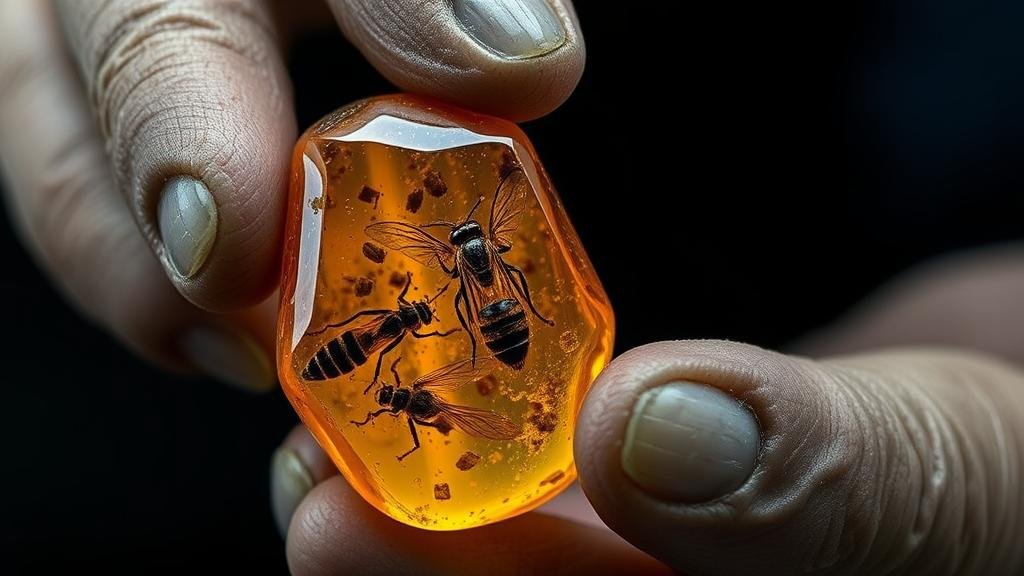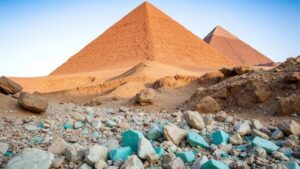Unearthing amber with rare insect inclusions in the Dominican Republic’s Cordillera Septentrional.
Unearthing Amber with Rare Insect Inclusions in the Dominican Republic’s Cordillera Septentrional
The Dominican Republic is renowned for its stunning landscapes and rich biodiversity, but it also holds a treasure trove for rockhounds and mineral collectors: amber. This fossilized resin, particularly from the Cordillera Septentrional, often contains rare insect inclusions that provide a unique glimpse into prehistoric ecosystems. In this article, we will delve into the geological context of Dominican amber, the significance of inclusions, and essential tips for collectors.
The Formation of Amber
Amber is formed from the resin of ancient trees, primarily from the family Araucariaceae, which were prevalent in the Cretaceous period, approximately 20 to 30 million years ago. As resin flows from the tree and accumulates in the environment, it can trap organisms and organic debris, preserving them in a state otherwise unattainable through normal fossilization processes. This unique formation process makes amber a fascinating subject for scientists and collectors alike.
Significance of Inclusions
Insect inclusions in amber provide critical insights into ancient ecosystems and evolutionary history. The type of insects found encased within amber can indicate the biodiversity of the era and give context to geological events that shaped an environment. Some notable examples of insect inclusions found in Dominican amber include:
- Ants (Formicidae), providing evidence of social insect behavior during the Miocene epoch.
- Beetles (Coleoptera), which represent diverse feeding adaptations and niches.
- Fly species (Diptera), showing early pollination relationships with flowering plants.
These inclusions are not just scientifically significant; they are also valuable to collectors. The rarity and condition of the inclusions can dramatically influence the market value of amber specimens.
If you are keen to collect amber with insect inclusions, the Cordillera Septentrional is a prime location. Here are some practical tips for collectors:
- Research Locations: The most productive sites for amber mining in the Dominican Republic are found primarily in the provinces of Santiago and Puerto Plata. Working with local guides can enhance your experience and increase your chances of finding quality specimens.
- Timing Your Visit: The rainy season lasts from May to November, during which erosion unveils newer amber deposits. Plan your visits accordingly for the best finds.
- Respect Regulations: Collecting amber in the Dominican Republic may be subject to specific regulations. Ensure you are informed about legal requirements to avoid penalties.
- Proper Equipment: Bring tools like soft picks, brushes, and small containers for delicate specimens. A magnifying glass can help assess the quality of inclusions on-site.
Identifying Quality Amber
When evaluating amber, consider the following factors:
- Clarity: Higher clarity specimens with minimal cracks or bubbles are more desirable.
- Color: Dominican amber typically ranges from yellow to deep orange. Rare blue and green varieties have also been found but are significantly more valuable.
- Inclusion Quality: The rarity and well-preserved nature of insect inclusions greatly influence value. Look for unique inclusions, like complete specimens or multi-species inclusions.
Real-World Applications of Amber Research
Research on amber has implications beyond collecting. Paleontologists utilize amber inclusions to study ancient climates, plant-insect interactions, and even evolutionary biology. Studies have indicated that the insects trapped in amber can also harbor ancient viruses, providing a biological snapshot of prehistoric life. These findings can yield important information that helps scientists understand present-day biodiversity trends and ecosystem adaptations.
Conclusion
Collecting amber from the Dominican Republics Cordillera Septentrional offers both a rewarding hobby and an opportunity to contribute to our understanding of natural history. By following the tips outlined in this article, collectors can maximize their chances of unearthing unique specimens while engaging with the remarkable stories frozen in time. As you delve into the world of amber collecting, remember that each piece holds a connection to our planets prehistoric past, inviting us to appreciate and protect the rich biodiversity that continues to evolve today.


